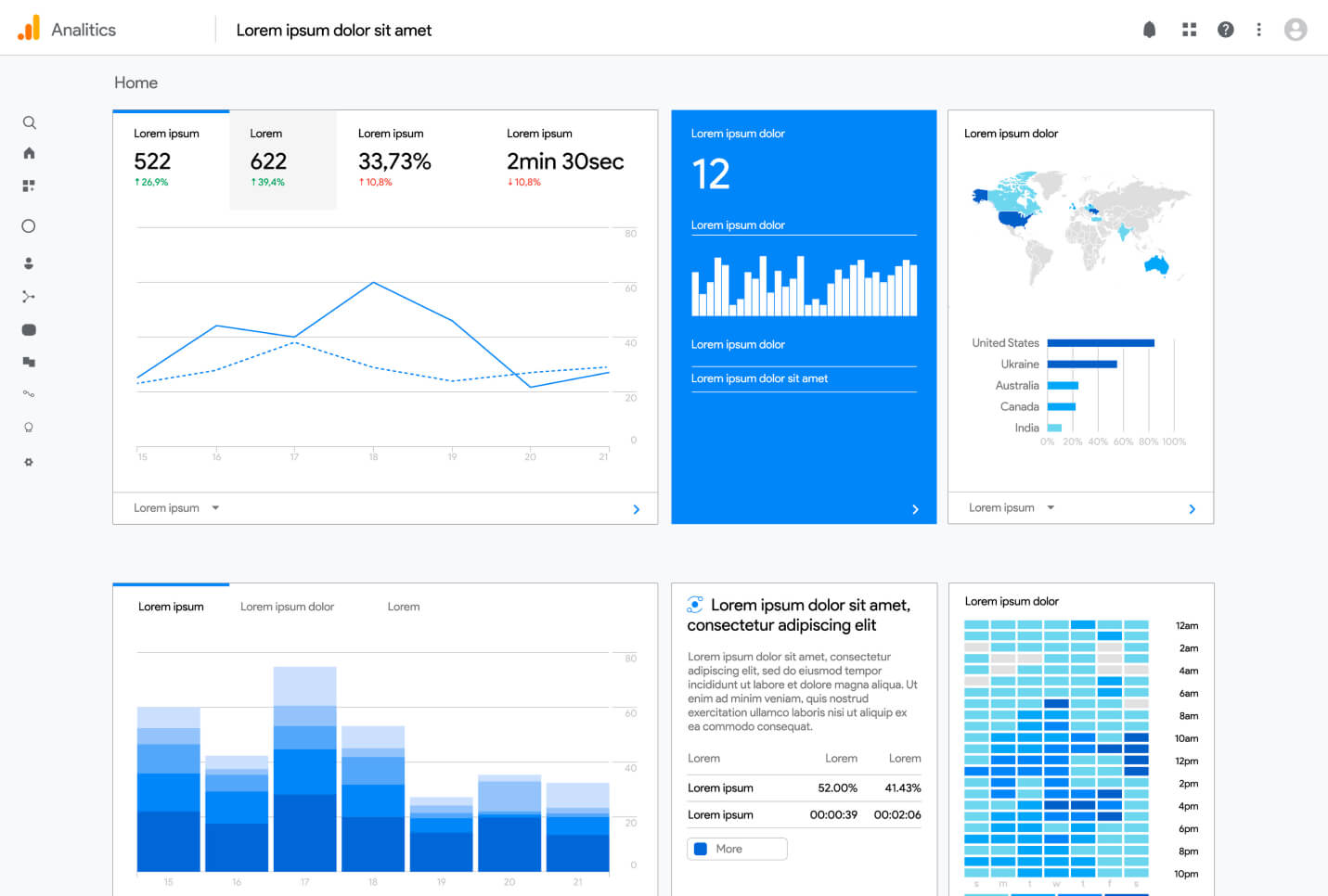How To Read Auction Insights in Google Ads: A Complete Guide

Google Ads is an essential tool for businesses of all sizes. It offers an efficient way to reach potential customers when they search for the products or services your business offers.
However, like any tool, it requires understanding and expertise to use it effectively. One aspect that can unlock a wealth of information about your competition and your own performance is the Auction Insights report.
Auction Insights are like a window into the Google Ads auctions, where your ads compete with others for the top spots. By interpreting the data these reports provide, advertisers can identify trends, strategize more effectively, and ultimately gain an edge over their competitors.
In this article, we will delve into the inner workings of Auction Insights, demystifying the key metrics and helping you turn the data into actionable strategies.
What Are the Basics of Google Ads Auctions?
Before we dive into Auction Insights, it's important to understand how the Google Ads auction works. Every time a user performs a search on Google, an auction is triggered. Advertisers who bid on the keywords used in the search will enter their ads into the auction.
The auction isn't just about who bids the highest. Google aims to ensure that the ads displayed are relevant to the user's search. This is where the role of keywords comes in. Keywords are the terms that you want to trigger your ads. They should be closely aligned with your products or services and, ideally, match the terms your potential customers use in their searches.
Along with your bid, the other crucial factor is your Quality Score. Google determines this score based on the relevance of your keywords, the quality of your landing page, and your ad's click-through rate (CTR). The more relevant and high-quality your ad is, the higher your Quality Score will be.
In the auction, Google combines your bid with your Quality Score to determine your ad rank. This rank decides whether your ad gets displayed and, if so, where it appears on the search results page. Therefore, understanding the basics of Google Ads auctions is essential for anyone wishing to succeed in the competitive world of online advertising. In the next section, we'll look specifically at the Auction Insights report and the treasure trove of data it can reveal.
What Is an Auction Insights Report?
Now that we've established the foundation of how Google Ads auctions work, we can dive deeper into the Auction Insights report. This powerful tool provided by Google gives advertisers a peek into the performance of their ads compared to other businesses participating in the same auctions.
In the Auction Insights report, you can see an array of data that provides unique perspectives on how your ads are performing against those of your competitors. This report doesn't give you specific details about your competitors' bids or strategies, but it offers statistical comparisons that can inform your Google Ads approach.
Understanding Key Metrics in Auction Insights
The Auction Insights report provides several key metrics that tell a story about your performance in the ad auctions. It's important to understand what these metrics mean to leverage them for strategy improvement.
Impression Share
This is the percentage of times your ad was shown out of the total number of auctions you were eligible to participate in. A high impression share means your ad is being displayed frequently, which can indicate effective keywords and bidding.
Overlap Rate
Overlap Rate shows how often another advertiser’s ad received an impression in the same auction that your ad also received an impression. A higher overlap rate means there is a high level of competition between you and another advertiser for the same keywords.
Position Above Rate
This metric tells you how often the other participant’s ad was shown in a higher position than yours when both ads were shown simultaneously. This can give insights into whether your competitors are likely bidding more aggressively or have a better Quality Score.
Top of Page Rate
This refers to the frequency with which your ad (or another participant's ad) was shown at the top of the page in search results. A higher rate can mean better visibility and potential for clicks.
Outranking Share
Outranking share shows how often your ad ranked higher in the auction than another advertiser’s or if your ad showed when theirs did not. A high outranking share is a good sign that your bids, Quality Score, and overall ad strategy are effective.
How Do I Access Auction Insights in Google Ads?
Accessing the Auction Insights report is relatively straightforward. Here's a step-by-step guide:
- Sign in to your Google Ads account.
- Go to the “Campaigns” or “Ad groups” tab, depending on what level you want to analyze.
- Check the box next to the campaign or ad group you want to analyze.
- Click on the “More” button above the statistics table.
- From the drop-down list, choose “Auction insights.”
- From here, you can view your report and begin to interpret the data.
One common issue users might face is not seeing any data. If this happens, it might be due to low activity on the campaign or ad group you're trying to analyze. Try selecting a different one with more activity, or wait until your chosen campaign or ad group has run for a longer period.
How To Understand a Google Auction Insight
With Auction Insights data at your fingertips, you can better understand your competitive landscape.
Here's how to analyze each key metric:
• If your Impression Share is low compared to competitors, consider increasing your bids or improving your ad quality to participate in more auctions. This could also indicate a need to increase budgets.
• Overlap Rate: A high Overlap Rate with a specific competitor suggests you're vying for the same audience. Study this competitor's ads for insights into their strategy.
• Position Above Rate: If a competitor often ranks above you, they might be bidding more aggressively or have higher-quality ads. You may need to improve your Quality Score or increase your bid to compete.
• Top of Page Rate: If competitors often appear at the top of the page, they likely have high-quality ads or bid aggressively. Aim to improve your ad quality or review your bidding strategy.
• Outranking Share: If a competitor often outranks you, review your strategy. Consider different keywords, higher bids, or improving your ad quality.
Don't panic if one metric seems off. The key is to look at these metrics together and in relation to your overall business goals. Monitoring these metrics over time is crucial, as trends can offer valuable insights into your competitors' behavior and your market.
How Can I Use Auction Insights to Inform Your Google Ads Strategy?
The data from Auction Insights is not just for analysis but should also inform your Google Ads strategy.
Here's how:
• Adapting bidding strategy: If your Impression Share is low or your Position Above Rate is high, consider increasing your bids for certain keywords. Remember to balance higher bids with your budget constraints.
• Adjusting keywords and Quality Score: If your Overlap Rate is high with certain competitors, it might be time to reassess your keyword strategy. Consider finding more niche, less competitive keywords. Similarly, a low Top of Page Rate might indicate that you need to work on improving your Quality Score. Focus on enhancing your ad relevance and landing page experience.
• Utilizing competitive analysis for strategic planning: Use the information about your competitors to inform your overall strategy. If a competitor consistently outranks you, study their ads for insights. They may be using different ad copy, or their website may offer a better user experience.
What Are Some Common Mistakes When Using Auction Insights?
While Auction Insights can be a powerful tool, it's important to avoid a few common mistakes:
Over-Reliance on Single Metrics
Each metric provides a piece of the puzzle. Make sure to consider all metrics in conjunction rather than focusing on just one. For example, a high Impression Share is great, but if your Position Above Rate is also high, you may not be reaching the top of the page often enough to achieve your desired results.
Misinterpreting Competitor Data
Remember, the Auction Insights report doesn't tell you everything about your competitors. They might have different budgets, target different audiences, or have different business objectives. Use the report for insights, but don't assume you have the full picture.
Ignoring Changes Over Time
Trends can provide important insights, so don't forget to look at how these metrics change over time. If your Outranking Share is decreasing, it might be a sign that competitors are stepping up their game.
Start Building Your Competitive Marketing Campaign
A competitive marketing campaign isn’t a one-and-done type of business task. To become competitive in marketing, you’ll need to constantly try new techniques and evaluate the success or downfalls in order to make quick and fluid changes.
It’s not about what you like; it’s about what your customers like.
Understanding and interpreting Auction Insights in Google Ads can be a game-changer for your business. These insights offer a unique view into the competitive landscape, allowing you to adapt your strategy, refine your ad campaigns, and stay ahead of the competition.
With Auction Insights, the power is in your hands. Review these reports regularly, as they can provide valuable information about your performance and competitors' strategies. Here's to using Auction Insights to gain a competitive edge and drive your online success!
For assistance with Google Auction Insight, or other forms of consumer outreach, marketing, and branding, reach out to our specialized teams at GR0. A partnership with GR0 is about working together to grow your brand through proper customer outreach and education.
Sources:
Why Keywords Are Still So Very Important for SEO | Search Engine Journal
Search term impression share report for Sponsored Products | Amazon Advertising
Table of Contents
Google Ads is an essential tool for businesses of all sizes. It offers an efficient way to reach potential customers when they search for the products or services your business offers.
However, like any tool, it requires understanding and expertise to use it effectively. One aspect that can unlock a wealth of information about your competition and your own performance is the Auction Insights report.
Auction Insights are like a window into the Google Ads auctions, where your ads compete with others for the top spots. By interpreting the data these reports provide, advertisers can identify trends, strategize more effectively, and ultimately gain an edge over their competitors.
In this article, we will delve into the inner workings of Auction Insights, demystifying the key metrics and helping you turn the data into actionable strategies.
What Are the Basics of Google Ads Auctions?
Before we dive into Auction Insights, it's important to understand how the Google Ads auction works. Every time a user performs a search on Google, an auction is triggered. Advertisers who bid on the keywords used in the search will enter their ads into the auction.
The auction isn't just about who bids the highest. Google aims to ensure that the ads displayed are relevant to the user's search. This is where the role of keywords comes in. Keywords are the terms that you want to trigger your ads. They should be closely aligned with your products or services and, ideally, match the terms your potential customers use in their searches.
Along with your bid, the other crucial factor is your Quality Score. Google determines this score based on the relevance of your keywords, the quality of your landing page, and your ad's click-through rate (CTR). The more relevant and high-quality your ad is, the higher your Quality Score will be.
In the auction, Google combines your bid with your Quality Score to determine your ad rank. This rank decides whether your ad gets displayed and, if so, where it appears on the search results page. Therefore, understanding the basics of Google Ads auctions is essential for anyone wishing to succeed in the competitive world of online advertising. In the next section, we'll look specifically at the Auction Insights report and the treasure trove of data it can reveal.
What Is an Auction Insights Report?
Now that we've established the foundation of how Google Ads auctions work, we can dive deeper into the Auction Insights report. This powerful tool provided by Google gives advertisers a peek into the performance of their ads compared to other businesses participating in the same auctions.
In the Auction Insights report, you can see an array of data that provides unique perspectives on how your ads are performing against those of your competitors. This report doesn't give you specific details about your competitors' bids or strategies, but it offers statistical comparisons that can inform your Google Ads approach.
Understanding Key Metrics in Auction Insights
The Auction Insights report provides several key metrics that tell a story about your performance in the ad auctions. It's important to understand what these metrics mean to leverage them for strategy improvement.
Impression Share
This is the percentage of times your ad was shown out of the total number of auctions you were eligible to participate in. A high impression share means your ad is being displayed frequently, which can indicate effective keywords and bidding.
Overlap Rate
Overlap Rate shows how often another advertiser’s ad received an impression in the same auction that your ad also received an impression. A higher overlap rate means there is a high level of competition between you and another advertiser for the same keywords.
Position Above Rate
This metric tells you how often the other participant’s ad was shown in a higher position than yours when both ads were shown simultaneously. This can give insights into whether your competitors are likely bidding more aggressively or have a better Quality Score.
Top of Page Rate
This refers to the frequency with which your ad (or another participant's ad) was shown at the top of the page in search results. A higher rate can mean better visibility and potential for clicks.
Outranking Share
Outranking share shows how often your ad ranked higher in the auction than another advertiser’s or if your ad showed when theirs did not. A high outranking share is a good sign that your bids, Quality Score, and overall ad strategy are effective.
How Do I Access Auction Insights in Google Ads?
Accessing the Auction Insights report is relatively straightforward. Here's a step-by-step guide:
- Sign in to your Google Ads account.
- Go to the “Campaigns” or “Ad groups” tab, depending on what level you want to analyze.
- Check the box next to the campaign or ad group you want to analyze.
- Click on the “More” button above the statistics table.
- From the drop-down list, choose “Auction insights.”
- From here, you can view your report and begin to interpret the data.
One common issue users might face is not seeing any data. If this happens, it might be due to low activity on the campaign or ad group you're trying to analyze. Try selecting a different one with more activity, or wait until your chosen campaign or ad group has run for a longer period.
How To Understand a Google Auction Insight
With Auction Insights data at your fingertips, you can better understand your competitive landscape.
Here's how to analyze each key metric:
• If your Impression Share is low compared to competitors, consider increasing your bids or improving your ad quality to participate in more auctions. This could also indicate a need to increase budgets.
• Overlap Rate: A high Overlap Rate with a specific competitor suggests you're vying for the same audience. Study this competitor's ads for insights into their strategy.
• Position Above Rate: If a competitor often ranks above you, they might be bidding more aggressively or have higher-quality ads. You may need to improve your Quality Score or increase your bid to compete.
• Top of Page Rate: If competitors often appear at the top of the page, they likely have high-quality ads or bid aggressively. Aim to improve your ad quality or review your bidding strategy.
• Outranking Share: If a competitor often outranks you, review your strategy. Consider different keywords, higher bids, or improving your ad quality.
Don't panic if one metric seems off. The key is to look at these metrics together and in relation to your overall business goals. Monitoring these metrics over time is crucial, as trends can offer valuable insights into your competitors' behavior and your market.
How Can I Use Auction Insights to Inform Your Google Ads Strategy?
The data from Auction Insights is not just for analysis but should also inform your Google Ads strategy.
Here's how:
• Adapting bidding strategy: If your Impression Share is low or your Position Above Rate is high, consider increasing your bids for certain keywords. Remember to balance higher bids with your budget constraints.
• Adjusting keywords and Quality Score: If your Overlap Rate is high with certain competitors, it might be time to reassess your keyword strategy. Consider finding more niche, less competitive keywords. Similarly, a low Top of Page Rate might indicate that you need to work on improving your Quality Score. Focus on enhancing your ad relevance and landing page experience.
• Utilizing competitive analysis for strategic planning: Use the information about your competitors to inform your overall strategy. If a competitor consistently outranks you, study their ads for insights. They may be using different ad copy, or their website may offer a better user experience.
What Are Some Common Mistakes When Using Auction Insights?
While Auction Insights can be a powerful tool, it's important to avoid a few common mistakes:
Over-Reliance on Single Metrics
Each metric provides a piece of the puzzle. Make sure to consider all metrics in conjunction rather than focusing on just one. For example, a high Impression Share is great, but if your Position Above Rate is also high, you may not be reaching the top of the page often enough to achieve your desired results.
Misinterpreting Competitor Data
Remember, the Auction Insights report doesn't tell you everything about your competitors. They might have different budgets, target different audiences, or have different business objectives. Use the report for insights, but don't assume you have the full picture.
Ignoring Changes Over Time
Trends can provide important insights, so don't forget to look at how these metrics change over time. If your Outranking Share is decreasing, it might be a sign that competitors are stepping up their game.
Start Building Your Competitive Marketing Campaign
A competitive marketing campaign isn’t a one-and-done type of business task. To become competitive in marketing, you’ll need to constantly try new techniques and evaluate the success or downfalls in order to make quick and fluid changes.
It’s not about what you like; it’s about what your customers like.
Understanding and interpreting Auction Insights in Google Ads can be a game-changer for your business. These insights offer a unique view into the competitive landscape, allowing you to adapt your strategy, refine your ad campaigns, and stay ahead of the competition.
With Auction Insights, the power is in your hands. Review these reports regularly, as they can provide valuable information about your performance and competitors' strategies. Here's to using Auction Insights to gain a competitive edge and drive your online success!
For assistance with Google Auction Insight, or other forms of consumer outreach, marketing, and branding, reach out to our specialized teams at GR0. A partnership with GR0 is about working together to grow your brand through proper customer outreach and education.
Sources:
Why Keywords Are Still So Very Important for SEO | Search Engine Journal
Search term impression share report for Sponsored Products | Amazon Advertising


Let's get started
We’re so excited to bring your story to life. What can we do for you?



